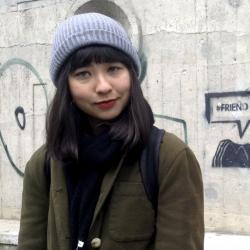People describe Reykjavík as a “tightly knit” city, evoking the image of interweaving threads crossing paths, individuals joining to create a whole. But the deeper you weave into the culture, the more tangled things become. You find yourself in something less like a neatly knitted scarf from Kiosk and more like a matted wad of yarn that has been thrown repeatedly into a windstorm. It’s a mess. A beautiful and ruthless mess. Maybe the metaphor of a collage is more apt. The idea of a patchwork of projects, overlapping and layering—itself upon itself. Never lacking and never really complete.
Though Picasso and the cubists were the first to bring collage technique into the realm of fine art, the Dadasists followed shortly thereafter, though using the form to entirely different ends. They abandoned the pretense of recognizable objects for abstract constructions and subverted long-defining elements of artistic practice like control and intentionality in favor of distortion and nonsense.

Sveinbjörn Thorarensen is a recurring pattern in the patchwork of Reykjavík’s culture collage. As a solo producer he’s Hermigervill. On the afternoon that I meet him, in the basement headquarters of the Icelandic Dance Company, he has three gigs lined up after our interview—a show at Mengi, a TV appearance with FM Belfast, and another show with Red Bull Music Academy at Húrra. The last time I saw him he was banging his head against a piano and hypnotizing the Reykjavík City Theatre crowd with his theramin. Sveinbjörn is the sound designer for the Icelandic Dance Company’s current production, Da Da Dans.
The show was choreographed by Inga Huld and Rósa Ómarsdóttir, an up-and-coming duo who made a name for themselves last year with the award-winning co-production of ‘The Valley.’ Ásgeir Magnússon, one of four principal dancers in the piece, has been dancing professionally for the last ten years, and with the Icelandic Dance company for the last six. “It’s amazing to work with Inga and Rósa,” he tells me. “They are new choreographers,”—Da Da Dans is only their second major production together—“but they have a profound knowledge of what a dancer needs, of how to interact with dancers. And they know what they want. They are confident. They allow for flexibility, but are confident in their structure.”

Flexibility within the structure seems to permeate the piece. The sound is controlled live, Sveinbjörn keeps a close eye on the dancers from off-stage, producing and reacting to their movements. “I’m back there tuning and turning,” he says, whirling his arms out like a DJ-robot on the fritz, “it’s like it’s own dance back there.” Though the performance is tightly choreographed and fine-tuned, the fact that Sveinbjörn is present and acting with the sound is a refreshing piece, Ásgeir adds. “It allows a freedom, as a dancer, to maybe linger in something a little longer…”
One doesn’t need to have a classical training in dance to reap the entertainment value and appreciation for the piece. “We are trained in the viewer’s process,” Ásgeir notes, “from cinema to television…the dance is not just about the dance, it’s about creating something visual.” The performance itself is a collage of instances, it does not appear to have one line of narrative but rather bounces in and out of situations, manipulating props, swerving through soundscapes, playing with poetics and, as Ásgeir describes it, “embracing the nonsense.”
Da Da Dans runs November 20, 24 and 27 at the Reykjavík City Theatre. More information about the Icelandic Dance Company can be found here, and tickets for the show can be bought online or at the theatre.
Buy subscriptions, t-shirts and more from our shop right here!
















